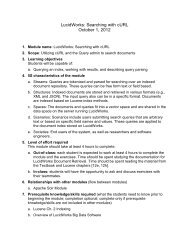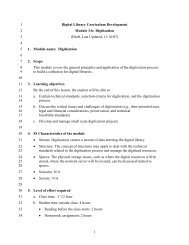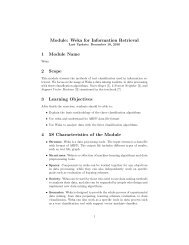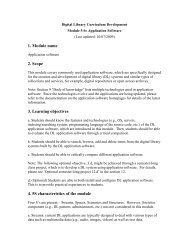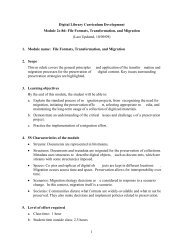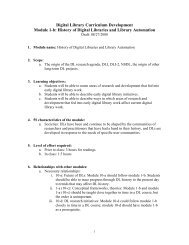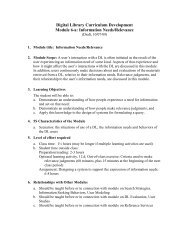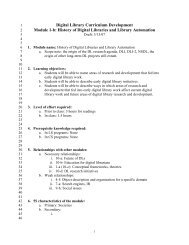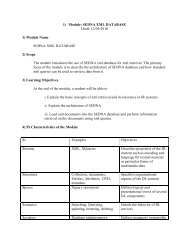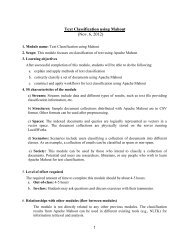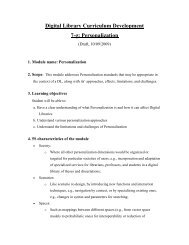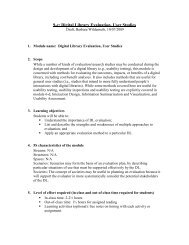Digital Library Curriculum Development Module 5-d: Protocols (Last ...
Digital Library Curriculum Development Module 5-d: Protocols (Last ...
Digital Library Curriculum Development Module 5-d: Protocols (Last ...
Create successful ePaper yourself
Turn your PDF publications into a flip-book with our unique Google optimized e-Paper software.
Z39.50<br />
client<br />
Z39.50 Z-Server DLIOP<br />
Client<br />
Remote<br />
Service<br />
Proxy<br />
Service<br />
Z39.50<br />
Server<br />
Interface<br />
Z39.50<br />
Client<br />
Interface<br />
Client<br />
Program<br />
DLIOP<br />
RSP<br />
Z39.50<br />
Z-Client<br />
Z39.50<br />
Service<br />
Figure 15. Z39.50 Interoperability Example of InfoBus<br />
8. Parallel and Distributed Information Retrieval<br />
a. Motivation<br />
i. Exponential growth in size of online scientific data.<br />
ii. Managing the size and growth of data demands scalable and<br />
multitasking algorithms.<br />
b. Requirements for Distributed IR <strong>Protocols</strong><br />
i. Enable retrieval of data from digital collections that are<br />
geographically separated.<br />
ii. Provide methods for linking and accessing heterogeneous<br />
collections of scientific data.<br />
c. Features of Parallel IR<br />
i. Computation model divides the main task into sub-tasks and<br />
executes the sub-tasks in parallel.<br />
ii. Sub-tasks generally run on homogeneous systems and each<br />
system works on the same problem.<br />
iii. Parallel IR uses shared memory models.<br />
iv. Parallel IR broadcasts every request to every process.<br />
v. Main objective is to achieve speed-up.<br />
d. Features of Distributed IR<br />
i. Like Parallel IR, computation model in Distributed IR divides the<br />
main task into sub-tasks and executes the sub-tasks in parallel.<br />
17



